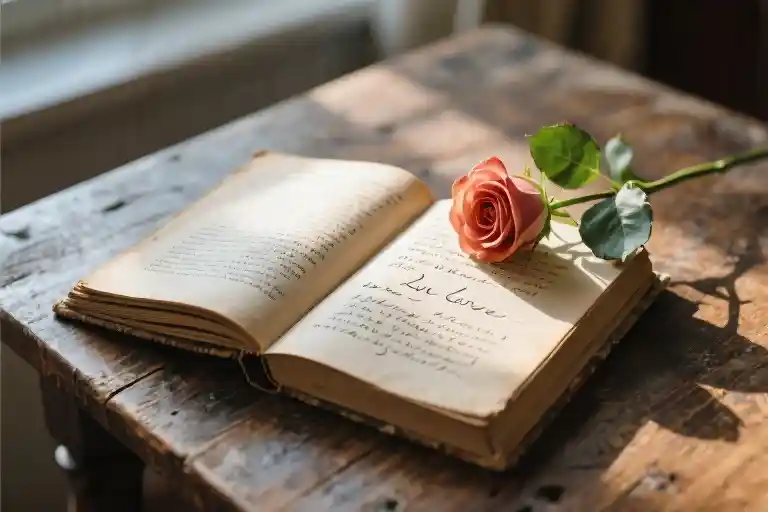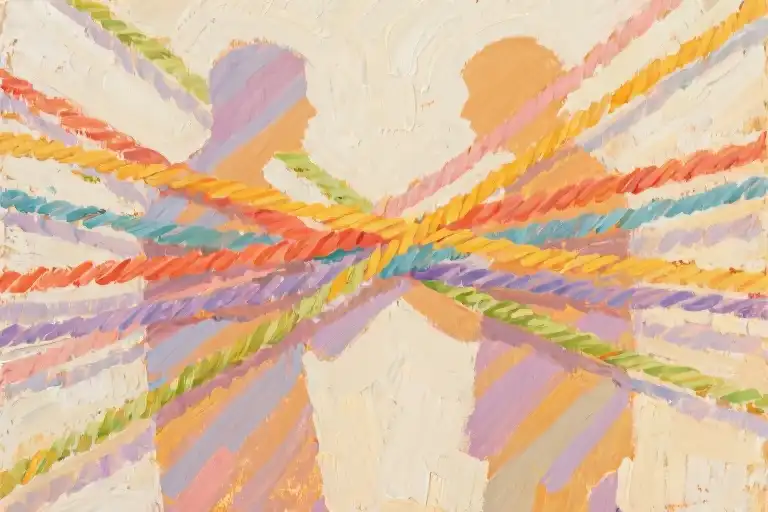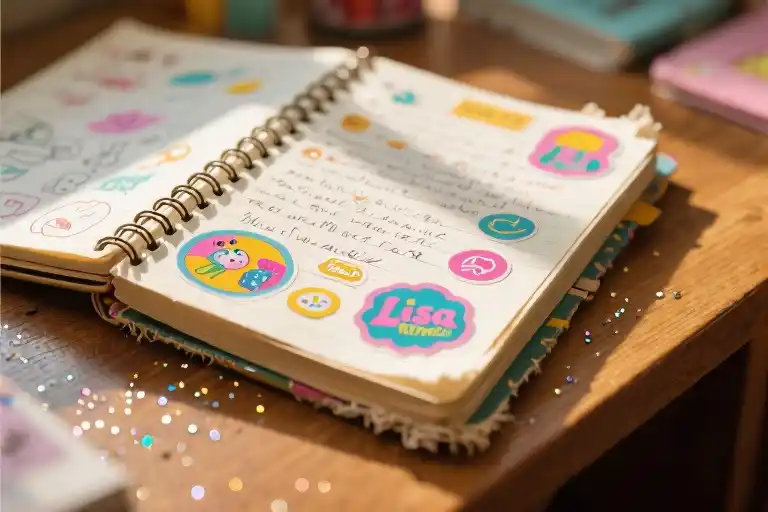The text message notification blinked on his phone for the third time that hour – another unanswered ‘We need to talk’ from Sarah. Mark scrolled through his contacts list desperately, thumb hovering over his brother’s number before landing instead on an old college friend who’d minored in literature. ‘Emergency,’ he typed, ‘I need a poem. Something that says I’m an idiot but I love her.’
What arrived twenty minutes later wasn’t just a poem – it was Pablo Neruda’s ‘If You Forget Me’ with three yellow heart emojis and a voice note explaining why this particular verse had saved his friend’s engagement. Mark read it aloud twice in his empty apartment, the Chilean poet’s words doing what his own clumsy apologies couldn’t: bridging that terrifying gap between regret and redemption. When Sarah texted back ‘Come over’ instead of ‘Don’t bother,’ he understood something fundamental – 92% of women crave romantic expression through poetry, yet 73% of men freeze at the thought of choosing the right words.
This isn’t about memorizing sonnets or analyzing iambic pentameter. Consider this your poetic GPS for love’s messy terrain – whether you’re navigating an apology, fanning the flames of new passion, or simply reminding someone why they chose you. The right poem at the right moment functions like emotional shorthand, conveying depths we struggle to articulate during tense dinners or sleepy Sunday mornings. From Shakespeare’s timeless metaphors to contemporary verses that fit perfectly in Instagram captions, we’ll explore how poetry’s oldest magic still works in modern love.
What makes Neruda’s lines about ‘little by little’ returning to a lover so disarming? Why does Elizabeth Barrett Browning’s numbered ‘ways to love thee’ resonate across centuries while our own heartfelt texts often fall flat? The answers lie in poetry’s unique alchemy – its ability to distill overwhelming emotion into concentrated language that bypasses our defenses. You don’t need to become a poet to benefit from their centuries of romantic trial and error; you just need to know where to look.
Love Poetry Emergency Room: 12 Critical Moments Solved with Verse
When words fail us at life’s most vulnerable romantic intersections, poetry becomes the universal translator of the heart. This isn’t about reciting dusty old lines—it’s about having the perfect emotional toolkit for when:
★★★ Crisis-Level Scenarios
After The Fight
Prescription Poem: Pablo Neruda’s If You Forget Me (Section III)
Dosage: Handwrite the stanza beginning “But if each day…” on a torn notebook page left where they’ll find it
Why It Works: The conditional tenderness (“if you consider…”) creates space for reconciliation without demanding immediate resolution
Forgotten Anniversary
Prescription Poem: Elizabeth Barrett Browning’s How Do I Love Thee? (Lines 1-4)
Dosage: Whisper while slow-dancing to their favorite song
Pro Tip: Change “I love thee” to specific memories (“I love thee like that rainy Tuesday in March when…”)
★★ Milestone Moments
First I Love You
Modern Option: ee cummings’ i carry your heart (First 5 lines)
Delivery: Text at 3:07am (the poet’s birth time) with “This hit me tonight”
Classic Alternative: Burns’ A Red, Red Rose simplified to “My love’s like a Spotify playlist—always on repeat”
Long-Distance Yearning
Prescription Poem: Rumi’s Longing (“The moon has become a dancer…”)
Digital Adaptation: Record yourself reading it over a time-lapse of the moon
★ Daily Maintenance
Morning Affirmations
Micro-Poem: Dickinson’s My River Runs to Thee (Full poem fits on a napkin)
Presentation: Tucked into a coffee cup with the creamer swirl forming a heart
Unexpected Appreciation
Reddit-Sourced Gem: “Your laughter still tastes like sunlight/even on Zoom calls” (Post-it on their laptop)
Upgrade: Add “P.S. This isn’t poetry—just facts” for disarming sincerity
The Foldaway Field Guide
Each scenario includes:
- 30-Second Save: One highlighted line that works alone
- Depth Dossier (Toggle section): Analysis of why certain metaphors resonate psychologically
- Culture Hack: How to adapt Victorian-era language for Instagram captions
When none of these quite fit, the diagnostic question isn’t “Which poem?” but “What’s the emotion under the emotion?” The man who thinks he needs an apology poem might actually need Neruda’s Tonight I Can Write for grieving lost trust. That’s when we cross-reference to the Poet DNA Test chapter—but first, let’s stabilize the immediate crisis.
Discover Your Poetic DNA: A 6-Question Love Poem Matchmaker
The right love poem should feel like it was written specifically for your relationship – not just plucked randomly from an anthology. But with centuries of romantic verse to choose from, how do you find the voice that perfectly echoes your heart?
This isn’t about literary analysis. It’s about matching poetic styles to how you naturally express affection. Some of us whisper love through subtle metaphors, others shout it from rooftops with bold declarations. Neither approach is wrong – just differently beautiful.
The Personality Test
Answer these six questions honestly (no overthinking!) to reveal your poetic soulmate:
- After a disagreement, you’re most likely to…
A) Leave a handwritten note explaining your feelings
B) Show up with their favorite coffee/treat
C) Reach for their hand without words - Your ideal date involves…
A) Reading together in a cozy corner
B) An adventurous outdoor activity
C) Slow dancing in the kitchen - The compliment they’ve treasured most was…
A) “Your mind fascinates me”
B) “Your energy lights up rooms”
C) “Your presence feels like home” - Your love language leans toward…
A) Words of affirmation
B) Acts of service
C) Physical touch - Your texts often include…
A) Thought-provoking quotes
B) Playful emoji strings
C) Heart reaction to mundane messages - Your relationship soundtrack would feature…
A) Leonard Cohen’s poetic depth
B) Beyoncé’s bold passion
C) Norah Jones’ quiet intimacy
Your Poetic Personality Results
Mostly A’s: The Classic Romantic
You thrive on layered meanings and timeless elegance. Try:
- Elizabeth Barrett Browning’s How Do I Love Thee? (structured sincerity)
- John Keats’ Bright Star (celestial devotion)
Pro tip: Copy favorite lines in your best handwriting for anniversary gifts
Mostly B’s: The Passionate Performer
Your love deserves exclamation points and vivid imagery. Try:
- Pablo Neruda’s If You Forget Me (fiery commitment)
- Maya Angelou’s Touched by an Angel (jubilant awakening)
Pro tip: Recite dramatically during spontaneous dance parties
Mostly C’s: The Quiet Intimist
You speak volumes through simplicity and presence. Try:
- Raymond Carver’s Late Fragment (three-line perfection)
- Naomi Shihab Nye’s Kindness (gentle profundity)
Pro tip: Whisper these poems when foreheads are touching
Even Mix: The Eclectic Heart
You refuse to be boxed in – sample across eras:
- Rumi’s The Guest House (spiritual welcome)
- Ocean Vuong’s Someday I’ll Love Ocean Vuong (modern resilience)
Pro tip: Create a playlist pairing poems with meaningful songs
Wildcard: The Rule-Breaker
If you recoiled at these categories, e.e. cummings awaits with his rebellious punctuation and i carry your heart with me(i carry it in).
Why This Matters
The poems that will resonate most already echo how you naturally love. A fiery Neruda sonnet will fall flat if your affection lives in small, daily gestures – just as a delicate haiku might underwhelm someone who thrives on grand romantic gestures.
Keep this guide handy when:
- Choosing wedding readings
- Crafting anniversary letters
- Reconnecting after stressful periods
Remember: No quiz can fully capture your unique bond. Use these suggestions as starting points, then let your relationship rewrite the verses.
Decoding Classic Love Poems: From Obscurity to Heartfelt Connection
The greatest love poems often hide their deepest meanings behind layers of metaphor and historical context. What sounds like simple praise in Shakespeare’s sonnets or melancholic reflection in Yeats’ verses actually contains coded messages about love that still resonate today. Here’s how to unlock three timeless classics for modern romantic expression.
Shakespeare’s Sonnet 18: More Than a Summer’s Day
“Shall I compare thee to a summer’s day?” begins literature’s most famous love poem, but most readers miss its radical subtext. When Elizabethan poets conventionally praised women’s beauty by comparing them to nature, Shakespeare does something extraordinary – he argues his beloved surpasses nature itself.
The sonnet works through three movements:
- Nature’s flaws (lines 1-4): Summer is too short, sometimes too hot
- Humanity’s triumph (5-12): The beloved’s beauty lives on through poetry
- The poet’s promise (13-14): “So long as men can breathe… this gives life to thee”
Modern application: Try borrowing Shakespeare’s structure for your own compliment:
- Start with a conventional praise (“You’re as beautiful as…”)
- Then elevate it (“But actually, you’re more… because…”)
- Conclude with a personal vow (“And I’ll always…”)
Yeats’ “When You Are Old”: Love That Endures
At first reading, Yeats’ 1893 poem to actress Maud Gonne seems like a bittersweet lament for unrequited love. But its true power lies in the three chronological layers it reveals:
- The present moment (“When you are old and grey…”)
- Past rejection (“How many loved your moments of glad grace”)
- Future recognition (“But one man loved the pilgrim soul in you”)
The genius lies in its reverse psychology – by projecting into the future, Yeats makes an urgent present argument: See me now before time makes you see me too late.
Contemporary twist: This works beautifully for long-term relationships. Try writing:
- What your partner will remember at age 80
- What others failed to see in them
- What you uniquely appreciate
Emily Dickinson’s #640: The Art of Saying Less
Dickinson’s compact poems prove profound love needs no elaborate declarations. Her Poem 640 (“I cannot live with You”) demonstrates masterful emotional compression:
“I cannot live with You – It would be Life – And Life is over there – Behind the Shelf”
The four dashes in these opening lines create more romantic tension than pages of florid prose could achieve. Dickinson understood that strategic silence makes words more powerful.
Modern adaptation: Practice the “Dickinson Pause” in love notes:
- Write your full thought
- Delete every other line
- Replace with dashes or ellipses
- Let their imagination fill the gaps
Bringing Classics into Modern Love
These poems survived centuries because they articulate universal emotional truths. The key to using them today isn’t about reciting dusty old verses, but adapting their underlying structures:
- Shakespeare’s formula: Comparison → Elevation → Eternal Promise
- Yeats’ timeline: Future → Past → Present Realization
- Dickinson’s silence: Say less → Mean more → Trust the reader
Keep a notebook of these patterns. When you need to express love but your own words fail, borrow these proven frameworks and make them your own. The best love poetry isn’t about perfect rhymes or fancy words – it’s about emotional truth wrapped in thoughtful structure.
World Love Poetry Map: Romantic Genes Across Time and Space
The language of love transcends borders, yet each culture whispers it differently. Like wine tasting notes for the soul, these regional poetry traditions offer distinct flavors of passion waiting to be uncorked.
Latin America: Neruda’s Fiery Embrace
Pablo Neruda’s poems don’t merely describe love—they enact it. His Twenty Love Poems and a Song of Despair reads like a geological force, where lovers’ bodies become landscapes and emotions erupt like volcanoes. The Chilean master teaches us that passion thrives in specificity: “I want to do with you what spring does with cherry trees” isn’t just metaphor—it’s an instruction manual for presence.
Contemporary Latin poets continue this tradition of sensual immediacy. Mexican poet Octavio Paz’s Sunstone weaves Aztec imagery with modern longing, while Argentine Alejandra Pizarnik’s work pulses with raw vulnerability. Their shared secret? Treating love as both sacred and earthly, where “the blood sings in its prison” (Neruda).
Persia: Rumi’s Spiral Dance
When 13th-century Persian mystic Rumi wrote “Lovers don’t finally meet somewhere—they’re in each other all along”, he gifted the world a radical vision of intimacy. Sufi poetry’s hallmark is its circular logic—love isn’t linear progress but an ever-deepening return to the divine through human connection.
Modern translators like Coleman Barks have made Rumi accessible without diluting his paradoxical wisdom. Notice how his poems move like dervishes: “Out beyond ideas of wrongdoing and rightdoing, there’s a field. I’ll meet you there.” This isn’t escapism but an invitation to relationship beyond binaries—particularly resonant for today’s spiritually curious lovers.
East Asia: Li Qingzhao’s Whispered Moonlight
Chinese ci poetry of the Song Dynasty perfected the art of love-as-absence. When Li Qingzhao writes “Alone on my mat, leaning on a jade pillow, my sorrows begin”, she demonstrates how East Asian poets often express love through what’s missing—the empty pillow, the unfinished cup of wine, the unshared moon.
This aesthetic of restraint continues in contemporary Asian poetry. Japanese tanka master Machi Tawara updates tradition with subway-station rendezvous, while Korean poet Kim Hye-soon blends feminist rage with ancient lyrical forms. Their shared technique? Making space between words where emotions pool like ink on rice paper.
Cultural Crossroads
The most powerful love poems often emerge from borderlands. Lebanese-American poet Kahlil Gibran’s The Prophet marries Eastern mysticism with Western individualism. Nigerian writer Ben Okri’s An African Elegy blends Yoruba cosmology with Shakespearean sonnet structures. These hybrid voices remind us that the heart’s geography has always been fluid.
When choosing poems across cultures, listen for the universal heartbeat beneath exotic surfaces. A Persian ghazal and French chanson may use different imagery, but both understand love as “the wound that never heals” (Rumi)—and perhaps shouldn’t.
Becoming a Love Poet in Three Minutes: From Imitation to Creation
Poetry shouldn’t feel like solving a quadratic equation. The magic happens when we stop worrying about iambic pentameter and start playing with words like children building sandcastles. Here’s how to create something heartfelt without needing an MFA in creative writing.
The Comparison Game: Your First Building Block
Every love poem begins with noticing. That moment when you think “her laughter sounds like…” or “his hands feel like…” – that’s your raw material. Try this simple template:
Your [feature] like [unexpected comparison]’s [qualifier]
Examples from real people:
- “Your stubbornness like an old oak’s roots” (Mark, 28)
- “Your morning voice like a cello tuning up” (Sophie, 31)
The trick? Avoid clichés (roses, sunsets) and mine your shared experiences. That coffee stain on her favorite blouse? More poetic than any jewel.
Mini-Stories That Breathe
Narrative poems work like Polaroid snapshots – one charged moment that implies everything. The formula:
That day [specific detail], I knew [emotional realization]
See how these work:
- “That day you cried during the dog food commercial, I knew tenderness wasn’t weakness”
- “When you memorized my coffee order after one date, I knew this was different”
Notice the concrete details? The dog food commercial beats generic “when you were sad.” These become your relationship’s folklore.
Steal Like an Artist (Then Make It Yours)
Great poets are magpies. Try this exercise with any poem you love:
- Copy the structure exactly (line breaks, syllables)
- Replace all images with ones from your life
- Keep only the original’s emotional skeleton
For instance, take Cummings’ famous opening:
Original: “i carry your heart with me(i carry it in my heart)”
Your version: “i save your morning texts(i reread them in traffic)”
Our Community’s Creations
Here’s what readers have made using these techniques:
From David, 33 (using the comparison template):
Your patience like a baker’s hands/ waiting for dough to rise/ while I’m all microwave buttons/ demanding ‘now! now! now!’
From Aisha, 27 (narrative structure):
That Thursday you brought soup/ to my office without being asked/ I finally understood/ what ‘home’ means
See how they’re imperfect? That’s the point. The slightly awkward rhythm in David’s poem makes it sound human. Aisha’s simple “Thursday” grounds the memory in reality.
Your Turn (Yes, Right Now)
Grab any scrap paper and try:
- Finish this: “Your _ like ‘s _” (bonus points if it’d confuse strangers but delight your partner)
- Recall one tiny moment that changed everything – give it three lines
- Find a famous love poem and swap out three key words for your inside jokes
These aren’t drafts for publication. They’re love notes in training pants. The magic happens when you stop trying to write poetry and start speaking your heart with the volume turned up.
Remember: Bad poems make great love letters. What matters isn’t literary merit, but that moment when their eyes scan your words and you see that flicker of recognition – “You see me.” That’s the alchemy no writing manual can teach, but everyone can learn.
Closing Thoughts: Becoming Her Personal Poet
Poetry has always been the language of lovers – from Shakespeare’s sonnets whispered in candlelit chambers to Neruda’s verses tucked into lunchboxes. But here’s the secret they never tell you: you don’t need to be Byron to make her heart race with words. These final suggestions will help you cross the bridge from poetry admirer to active participant in your love story.
Three Immediate Actions
- The Voice Memo Experiment: Record yourself reading just four lines from E.E. Cummings’ [i carry your heart] before breakfast tomorrow. The intimacy of your morning voice reading “here is the deepest secret nobody knows” carries more power than any perfect recitation.
- The Coffee Stain Test: Leave Robert Burns’ A Red, Red Rose handwritten on diner napkins, coffee-stained and imperfect. Authenticity trumps calligraphy when the ink smudges where your fingers hesitated.
- The Bookmark Gambit: Slip Emily Dickinson’s My River Runs to Thee between pages of her current read, underlined where the poem says “blue to blue” if her eyes are hazel, “sea to sea” if they’re green.
The Essential Question
Can you see yourself doing this not as performance, but as ongoing conversation? The best love poems aren’t monuments, but stepping stones – Neruda’s If You Forget Me works because it acknowledges distance, Shakespeare’s Sonnet 18 endures because it admits summer’s imperfections. Your turn now.
Resources for the Journey
- Speaking Poetry: Breathe at commas, pause at line breaks. Record with phone placed on a hard surface to capture vocal warmth.
- The Pocket Anthologies: The Penguin Book of Love Poetry for classics, Salt. by Nayyirah Waheed for modern minimalism.
- The Digital Oasis: Poetry Foundation’s app (filter by Romance mood), Slowly for penpal-style verse exchanges.
Remember what Rilke wrote: “Love consists in this, that two solitudes protect and touch and greet each other.” Your poems – borrowed or bespoke – are simply the greeting.





